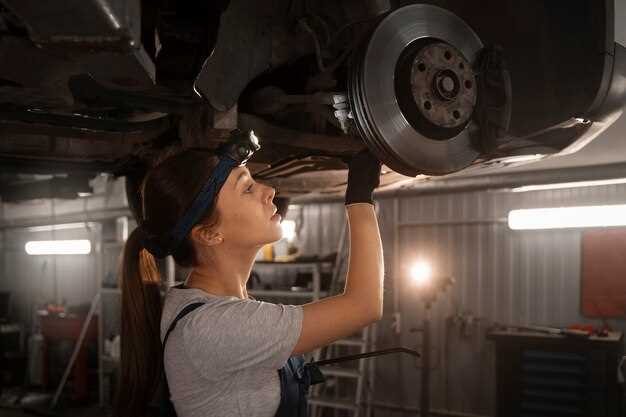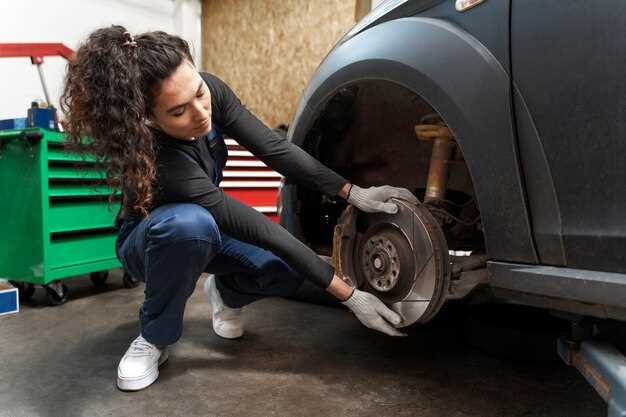How to Replace Audi Brake Pads at Home

The importance of proper brake function cannot be overstated, especially for safety-conscious drivers of Audi vehicles. As a vehicle owner, understanding how to diy brake maintenance can save you both time and money while ensuring you remain in control on the road. Replacing brake pads may seem daunting at first, but with the right tools and a clear guide, it can be achieved effectively.
This article serves as a comprehensive repair manual, detailing each step of the process involved in replacing Audi brake pads. By following this step-by-step guide, you will not only gain valuable insight into your vehicle’s brake system but also empower yourself with the skills to perform this crucial maintenance task independently.
Whether you’re an experienced mechanic or a beginner looking to tackle your first automotive project, this guide will provide you with the necessary knowledge and confidence to successfully replace your Audi’s brake pads. Let’s get started on your journey toward improving your vehicle’s safety and performance.
Tools and Materials Needed for Brake Pad Replacement
Replacing brake pads on your Audi is a straightforward DIY project that requires specific tools and materials to be executed safely and effectively. Here’s a detailed list of what you’ll need.
Essential Tools:
- Jack and Jack Stands: A hydraulic jack is necessary to lift your vehicle, while jack stands will securely support the car during the replacement process.
- Lug Wrench: This tool is needed to remove the wheel bolts, allowing you access to the brake assembly.
- Brake Caliper Tool: This tool helps in compressing the caliper pistons, making it easier to install new brake pads.
- Socket Set: A set of sockets will enable you to remove bolts and other fasteners that hold the brake components in place.
- Screwdrivers: Both flat-head and Phillips screwdrivers are useful for various screws around the brake system.
Safety Gear:
- Safety Glasses: Protect your eyes from debris and dust while working on your vehicle.
- Gloves: Wearing gloves helps keep your hands clean and safe from sharp objects or chemicals.
Materials Required:
- Brake Pads: Make sure to choose high-quality brake pads specifically designed for your Audi model.
- Brake Grease: This lubricant is crucial when installing new pads to reduce noise and ensure smooth operation.
- Brake Cleaner: Use this to clean the brake components before installing the new pads, removing any dust or grime.
Having the right tools and materials is essential for a successful brake pad replacement. Proper preparation ensures that your DIY project goes smoothly and helps maintain the performance and safety of your vehicle.
How to Safely Lift and Secure Your Audi
Before undertaking a DIY brake repair on your Audi, it’s crucial to lift and secure the vehicle properly. This ensures both your safety and the integrity of the car during the brake pad replacement process.
- Gather Your Tools:
- Car jack
- Jack stands
- Tire iron
- Wheel chocks
- Park on a Level Surface: Ensure your Audi is parked on a flat, stable surface to prevent rolling.
- Engage the Parking Brake: Always activate the parking brake before lifting the vehicle.
- Loosen Wheel Nuts:
- Use a tire iron to slightly loosen the nuts on the wheel you intend to remove.
- This is easier while the tire is on the ground.
- Lift the Audi:
- Position the car jack under the jacking points specified in your owner’s manual.
- Lift the car until the wheel is off the ground.
- Secure with Jack Stands:
- Place jack stands under the vehicle’s frame or designated support points.
- Lower the jack slowly to rest the car securely on the stands.
- Check Stability: Before starting any repair, gently tap the vehicle to ensure it is securely supported and stable.
- Wheel Chocks:
- Place wheel chocks behind the wheels that remain on the ground to prevent movement.
By following these steps, you can safely lift and secure your Audi, creating a secure environment to perform your brake repair tasks. Always prioritize safety to ensure a smooth repair experience.
Step-by-Step Instructions for Removing Old Brake Pads

Replacing the brake pads on your Audi is an essential part of vehicle maintenance that you can handle yourself with the right tools and a little know-how. Follow these steps to ensure a smooth repair process.
Step 1: Gather Your Tools
Before starting, ensure you have all necessary tools. You will need a jack, jack stands, a lug wrench, a C-clamp or brake pad spreader, and a socket set. Having a clean workspace will make the diy experience more manageable.
Step 2: Secure Your Vehicle
Park your Audi on a level surface and engage the parking brake. Loosen the lug nuts on the front or rear wheels slightly, but do not remove them yet. Use the jack to lift the car until it’s high enough for the wheels to be safely removed.
Step 3: Remove the Wheels
Once the vehicle is lifted, place jack stands beneath the vehicle for safety. Now fully remove the lug nuts and take the wheel off to expose the brake assembly.
Step 4: Locate the Brake Caliper
The brake caliper is the component that holds the brake pads in place. Inspect the caliper and identify the bolts that secure it. Make sure you have the right socket size to remove these bolts.
Step 5: Remove the Caliper
Carefully unscrew the caliper bolts and gently lift the caliper off the rotor. Be cautious not to pull on the brake line, as this can cause damage. If necessary, hang the caliper using a bungee cord to avoid putting stress on the brake line.
Step 6: Extract the Old Brake Pads
With the caliper removed, you can now see the old brake pads. Slide them out from their grooves in the caliper bracket. Take note of their orientation, as you will need to install the new pads in the same way.
Step 7: Inspect the Rotors
Check the brake rotors for wear and damage. If the rotors appear worn, consider machining or replacing them before proceeding with the installation of new pads.
By following these detailed instructions, you can effectively remove your old brake pads, making way for new ones and ensuring your Audi’s braking system remains safe and reliable.
How to Properly Install New Brake Pads
Installing new brake pads is a crucial step in maintaining your vehicle’s braking system. Proper installation ensures optimal performance and safety. Follow these steps carefully to complete your diy brake repair.
1. Gather Necessary Tools and Materials: Before starting, collect all required tools including a socket set, brake pad spreader, c-clamp, and jack stands. Ensure you have the new brake pads that are compatible with your Audi model.
2. Prepare the Vehicle: Park your Audi on a level surface and engage the parking brake. Loosen the lug nuts on the wheel where you will be replacing the brake pads. Use a jack to elevate the vehicle and secure it with jack stands for safety.
3. Remove the Wheel: Once the vehicle is safely elevated, remove the lug nuts completely and take off the wheel to access the brake components.
4. Remove the Caliper: Locate the brake caliper and use the appropriate socket to remove the bolts holding it in place. Carefully slide the caliper off the brake rotor, ensuring not to damage the brake line. Use a bungee cord or hang it from the suspension to avoid putting stress on the brake line.
5. Remove Old Brake Pads: Once the caliper is off, slide out the old brake pads from their slots. Note their orientation for proper installation of the new pads.
6. Compress the Brake Piston: Use a c-clamp or brake pad spreader to compress the brake piston back into the caliper housing. This step is essential as it creates enough space for the new, thicker pads.
7. Install New Brake Pads: Take the new brake pads and position them into the caliper bracket where the old pads were removed. Ensure they are seated properly and oriented correctly for effective braking performance.
8. Reattach the Caliper: Carefully slide the caliper back over the new pads and rotor. Align the caliper holes with the mounting bracket and insert the bolts. Tighten them according to manufacturer specifications to secure the caliper in place.
9. Reinstall the Wheel: Put the wheel back onto the hub and hand-tighten the lug nuts. Lower the vehicle back to the ground and then tighten the lug nuts in a crisscross pattern to ensure an even fit.
10. Test the Brakes: Before driving, pump the brake pedal several times until it feels firm. This action helps position the brake pads against the rotor correctly. Finally, take a short test drive to ensure that the new brake pads are functioning effectively.
Cleaning and Maintenance of Brake Components

Maintaining the cleanliness of brake components is crucial for ensuring optimal performance and longevity. When undertaking a DIY brake repair project, it’s essential to consider the condition of various parts. Proper cleaning can prevent unnecessary wear and enhance the effectiveness of the brake system.
Before starting, gather the necessary tools: brake cleaner, a brush, microfiber cloths, and a torque wrench. Here’s a step-by-step guide to clean the main brake components:
| Component | Cleaning Method | Maintenance Tips |
|---|---|---|
| Brake Pads | Inspect for dust and debris. Use a brake cleaner spray and a soft brush to remove contaminants. | Check for uneven wear; replace pads if necessary. |
| Brake Rotors | Clean with a brake cleaner and a cloth. For heavy deposits, use a non-abrasive pad or rotor cleaner. | Check for grooves or scoring; resurfacing may be needed. |
| Calipers | Remove dust and grime using a brush and brake cleaner. Ensure the caliper slides are free of rust. | Lubricate slide pins during reassembly to ensure smooth operation. |
| Brake Lines | Check for leaks and clean fittings with a soft cloth. Ensure no debris is obstructing fluid flow. | Inspect for wear; replace lines as necessary to maintain braking performance. |
After cleaning, always perform a thorough inspection of all components to determine if they require replacement. This ensures that any potential issues are addressed before reassembly, promoting safety and reliability in your vehicle’s braking system.
Testing Your Brakes After Replacement
After completing the DIY brake pad replacement on your Audi, it’s crucial to ensure that your new brakes are functioning properly. Proper testing can prevent future issues and ensure your safety on the road.
Follow these steps to effectively test your brakes:
-
Initial Inspection:
- Visually inspect the brake components for any obvious issues such as misalignment or loose fittings.
- Check for any leaks in the brake fluid lines.
-
Brake Bed-In Process:
- Perform a bed-in procedure, which helps to create an even layer of friction material on the brake pads.
- Drive at a moderate speed and perform a series of gentle stops to gradually heat up the brakes.
-
Test Drive:
- Find a safe, open area to conduct your test drive.
- Begin by gradually accelerating to about 30 mph, then apply the brakes firmly to check for responsiveness.
- Listen for any unusual noises such as grinding or squeaking, which could indicate improper installation or faulty parts.
-
Emergency Brake Test:
- At a low speed, pull the emergency brake to ensure it engages correctly.
- Check if the vehicle stays stationary when the emergency brake is applied.
-
Final Check:
- Recheck brake fluid levels after the test drive.
- Make sure the brake pedal feels firm and does not sink to the floor when pressed.
Through this testing procedure, you can confirm that your DIY brake repair is successful and that your Audi is ready for the road. Always prioritize safety when working with essential vehicle components like brakes.




